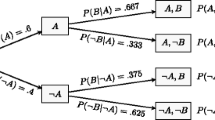Abstract
APE is a psychophysical procedure designed to estimate complete psychometric functions with maximum statistical efficiency in return for minimum subject labour. It is based on the classical Method of Constant Stimuli, but differs in that only certain stimuli from the whole set available are tested. APE selects those stimulus levels at which the most information concerning the psychometric function is to be gained, updating this selection in the light of recent response history.
The performance of APE is compared with that of the classical Method by Monte-Carlo testing and is shown to be superior in several respects. First, the standard errors obtained are all smaller (reliability is higher). Moreover, APE is shown to be considerably more tolerant of the necessarily arbitrary decisions concerning stimulus levels to be tested. In practice this would increase the accuracy of the estimates obtained.
APE has been used for a wide variety of tasks, and is available as a FORTRAN II computer subprogram from the authors.
Similar content being viewed by others
References
Andrews, D. P. & Miller, D. T. (1978). Acuity for spatial separation as a function of stimulus size. Vision Research, 18, 615–619.
Andrews, D. P., Webb, J. M. & Miller, D. T. (1974). Acuity for length comparison in continuous and broken lines. Vision Research, 14, 757–766.
Cornsweet, T. N. (1962). The staircase method in psychophysics. American Journal of Psychology, 75, 485–491.
Dixon, W. J. & Mood, A. M. (1948). A method for obtaining and analyzing sensitivity data. Journal of American Statistical Association, 43, 109–126.
Finney, D.J. (1971). Probit Analysis, 3rd ed. Cambridge University Press.
Guilford, J. P. (1954). Psychometric Methods, 2nd ed. New York: McGraw-Hill.
Senders, V. L. & Sowards, A. (1952). Analysis of response sequences in the setting of a psychophysical experiment. American Journal of Psychology, 65, 358–374.
Taylor, M. M. & Creelman, C. D. (1967). PEST: efficient estimates on probability functions. Journal of the American Statistical Association, 41, 782–787.
Wetherill, G. B. (1966). Sequential Methods in Statistics. London: Methuen.
Author information
Authors and Affiliations
Rights and permissions
About this article
Cite this article
Watt, R.J., Andrews, D.P. APE: Adaptive probit estimation of psychometric functions. Current Psychological Reviews 1, 205–213 (1981). https://doi.org/10.1007/BF02979265
Accepted:
Issue Date:
DOI: https://doi.org/10.1007/BF02979265




